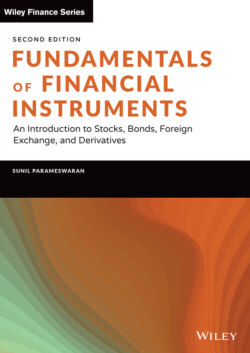Читать книгу Fundamentals of Financial Instruments - Sunil K. Parameswaran - Страница 81
PROPERTIES
ОглавлениеIf N = 1, that is, an investment is made for one period, both the simple and compound interest techniques will give the same accumulated value.In the case of Katherine, the value of her initial investment of $25,000 at the end of the first year was $27,000, irrespective of whether simple or compound interest was used.
If N < 1, that is, the investment is made for less than a period, the accumulated value using simple interest will be higher. That isFor instance, assume that Katherine deposits $25,000 for nine months at a rate of 8% per annum compounded annually. If interest is calculated on a simple interest basis, she will receiveOn the other hand, compound interest would yield
If N > 1, that is, the investment is made for more than a period, the accumulated value using compound interest will always be greater. That isAs can be seen, if Katherine were to invest for four years, simple interest will yield $33,000 at the end, whereas compound interest will yield $34,012.2240.
Note 1: The word period used here to demonstrate the properties of simple and compound interest should be interpreted as the interest conversion period. In our illustrations, the interest was compounded once per year, so there was no difference between the measurement period and the conversion period; however, take the case where interest is paid at 8% per annum compounded quarterly. If so, the above properties may be stated as follows.
If the investment is made for one quarter, both simple and compound interest will yield the same terminal value.
If the investment is made for less than a quarter, the simple interest technique will yield a greater terminal value.
If the investment is made for more than a quarter, the compound interest technique will yield a greater terminal value.
Simple interest is usually used for short-term or current account transactions, that is, for investments for a period of one year or less. Consequently, simple interest is the norm for money market calculations. The term money market refers to the market for debt securities with a time to maturity at the time of issue of one year or less. In the case of capital market securities, however – that is, medium- to long-term debt securities and equities – we use the compound interest principle. Simple interest is also at times used as an approximation for compound interest over fractional periods.
